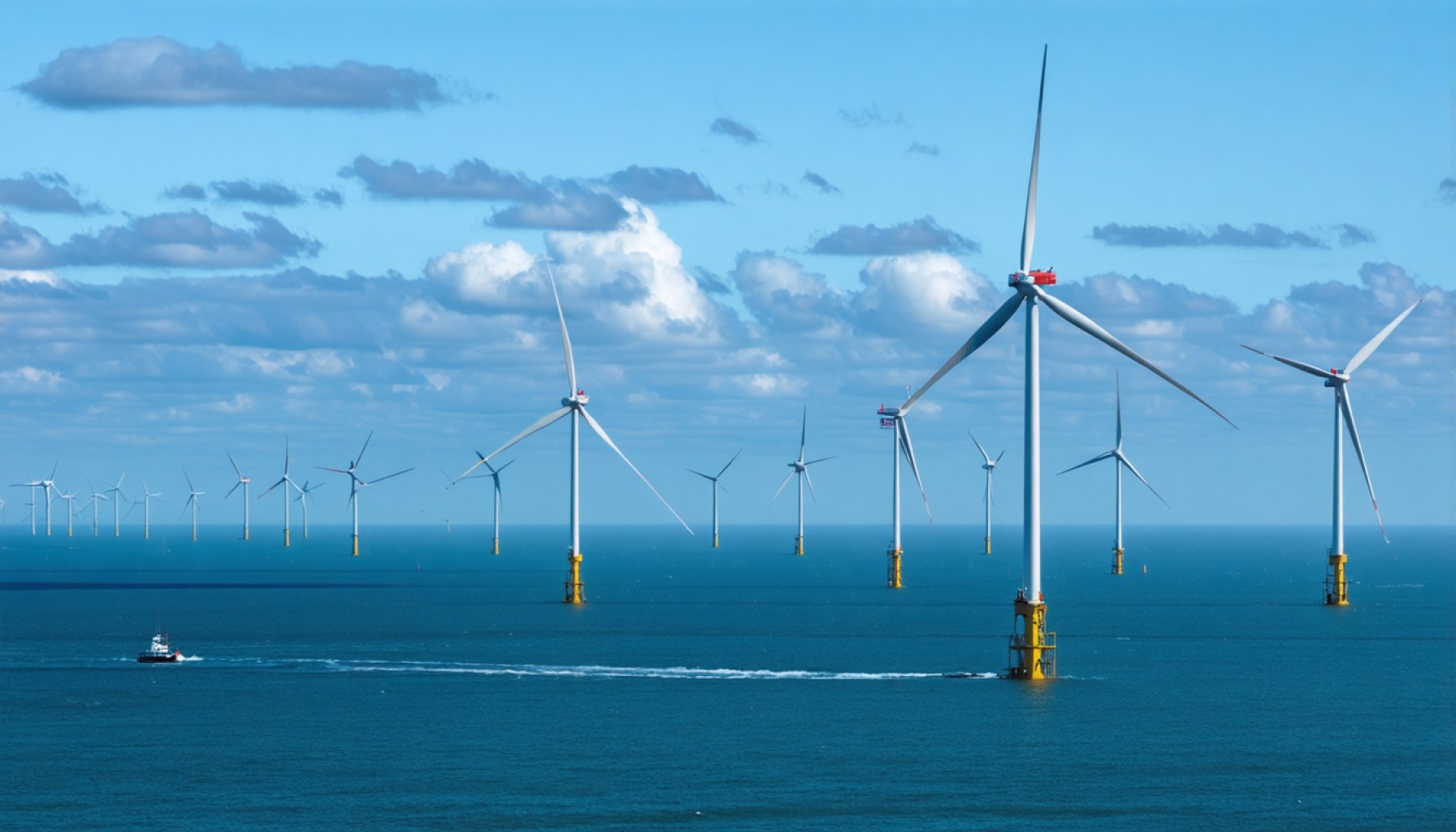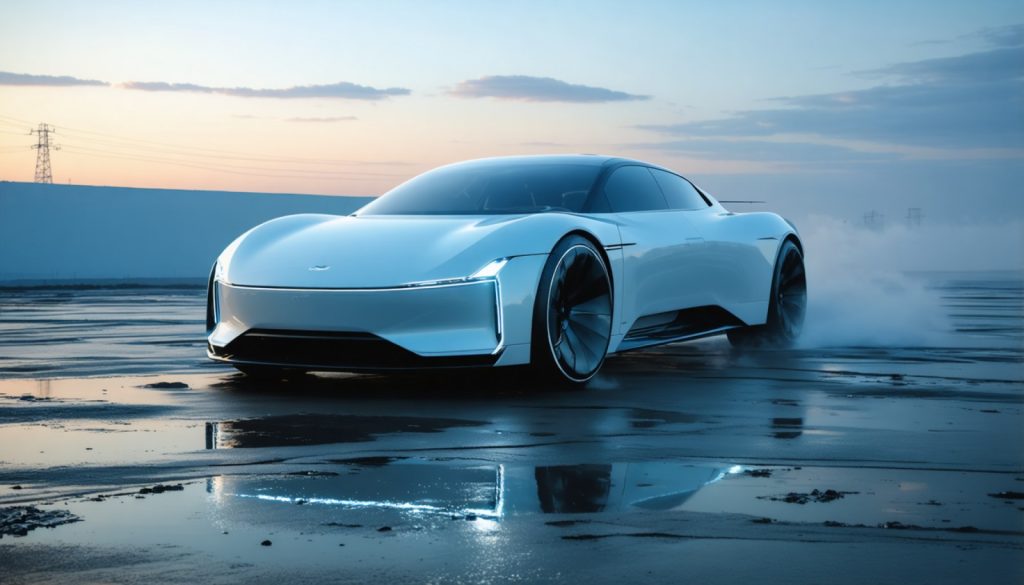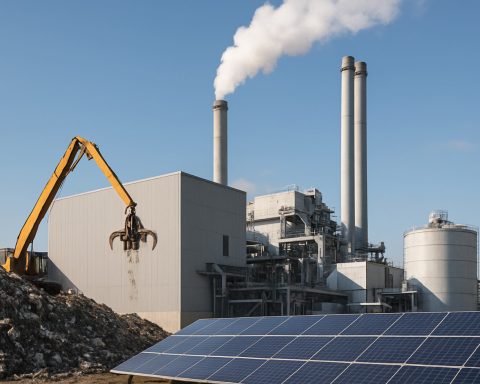- Federal intervention halts New York’s Empire Wind 1 project, impacting the state’s renewable energy plans.
- The offshore wind initiative was expected to power 500,000 homes and create 1,500 jobs, highlighting its socio-economic potential.
- Local communities, like Sunset Park, faced setbacks in anticipated economic and employment benefits from the project.
- Stalled progress threatens New York’s goal of a 70% renewable energy grid by 2030 and poses challenges to the broader offshore wind industry.
- Policy inconsistency with federal transitions disrupts momentum, calling for bipartisan commitment to sustainable energy.
- Advocates emphasize the need for innovation and stable policy support to secure a clean energy future.
New York’s ambitious journey towards a greener grid faces a sudden roadblock as federal intervention halts the Empire Wind 1 project—a beacon of renewable energy off the coast of Long Island. This offshore wind initiative, a cornerstone of New York’s clean energy future, aimed to energize half a million homes and invigorate the local economy with over 1,500 new jobs. But a directive from the Bureau of Ocean Energy Management, prompted by a re-evaluation of approval processes from the federal level, casts a shadow over these grand plans.
The arrest of Empire Wind 1’s momentum underscores the complexities of the energy transition in regions already grappling with space constraints and economic disparities. This coastal project promised profound socio-economic benefits, notably for communities in the downstate region like Sunset Park—a neighborhood that has long shouldered the burdens of environmental neglect. The expectation of new green jobs was not merely about employment; it represented a shift towards equity in an area yearning for sustainable development.
As the booming sound of seafaring monopile installations quiets, mounting uncertainty weighs on the shoulders of tradespeople who anticipated steady work and the promise of a paycheck. For union members and apprentices alike, the stoppage spells anxious days ahead. This project’s potential to catalyze New York’s clean energy goals and offer pathways for raising the earning potential of citizens in lower-income brackets now hangs in the balance.
New York’s Climate Act targets a 70% renewable grid by 2030, a goal that looks increasingly challenged in light of current events. The sequence of halted projects has compounded frustrations in a state eager to maintain its leadership in climate action. Consequently, this suspension sends ripples of insecurity that extend beyond the immediate locale, threatening the very rhythm of the country’s burgeoning offshore wind industry.
Advocates for renewable energy, like Public Power NY, urge the state to overcome these headwinds with renewed vigor and innovation. The specter of policy shifts with each change in federal administration jeopardizes the momentum necessary for climate progress. As suggested by energy policy experts, the potential discontinuity in reliable policy support could redefine the landscape of America’s clean energy strategy.
The halting of the Empire Wind 1 project serves as a clarion call—emphasizing the fragility of progress without solidified bipartisan commitment to sustainable energy. In the face of political, financial, and logistical barriers, the march towards a clean energy future requires steadfast dedication, one that transcends administrative fluctuations and secures a stable, sustainable framework for generations to come.
What’s Next for New York’s Green Energy Future Amidst Setbacks?
The federal halt of New York’s Empire Wind 1 project, due to a re-evaluation by the Bureau of Ocean Energy Management, represents a significant roadblock in the state’s quest for a greener energy grid. This initiative, poised to power over 500,000 homes, symbolized a large step towards achieving New York’s Climate Act target of a 70% renewable energy grid by 2030. This delay, however, underscores the broader challenges in transitioning to sustainable energy, especially in areas facing economic and spatial limitations.
Key Facts and Insights
1. Socio-Economic Impact: Empire Wind 1 was not just about clean energy; it also promised socio-economic revitalization, particularly for underprivileged communities like Sunset Park. The creation of over 1,500 jobs was a beacon of hope for economic equity and sustainable development.
2. Industry Implications: The stoppage has broader implications for the offshore wind industry, potentially affecting supply chains, tradespeople, and apprentices reliant on steady work from such projects.
3. Political and Policy Challenges: The intervention highlights the vulnerability of clean energy projects to policy shifts. Dependence on federal directives means that consistent, bipartisan support is crucial for progress.
4. Environmental Commitments: New York’s Climate Act goals are under pressure due to the delay. Meeting the 70% renewable energy grid target by 2030 requires accelerating other initiatives and securing policy continuity.
Real-World Use Cases and Market Trends
– Job Creation and Economic Development: Offshore wind projects like Empire Wind 1 play a critical role in job creation and boosting local economies. Industry experts suggest diversifying energy projects to mitigate the impact of halts and delays.
– Advancements in Technology: Embracing newer technologies such as floating wind turbines could address space limitations and accelerate project timelines. This approach allows for installations in deeper waters, potentially reducing environmental impact.
Controversies and Limitations
– Environmental Concerns: Despite their benefits, offshore wind projects face criticism about their impact on marine ecosystems. Comprehensive environmental reviews and simulations are necessary for sustainable practices.
– Infrastructure Readiness: The gap in infrastructure to support large-scale renewable projects highlights the need for investment in grid modernization and storage solutions.
Insights and Predictions
1. Policy Recommendations: States should collaborate with federal entities to create resilient frameworks that support renewable energy consistently, regardless of political changes.
2. Technological Investments: Investing in grid modernization and storage technologies is imperative to efficiently integrate wind energy and ensure stability across the power network.
3. Future of Offshore Wind: Despite setbacks, offshore wind is expected to play a critical role in America’s clean energy transition. Continued research and development in offshore technologies are crucial.
Actionable Recommendations and Tips
– Diversify Energy Projects: To mitigate risks, invest in multiple renewable energy sources and technologies, including solar, battery storage, and energy efficiency measures.
– Policy Advocacy: Advocate for stable, long-term policies supporting renewable energy to foster confidence among investors and developers.
– Community Engagement: Engage local communities in project planning and development to ensure socio-economic benefits and address concerns promptly.
Conclusion
The delay of the Empire Wind 1 project serves as a critical reminder of the complexities in achieving a sustainable energy future. New York and other states must navigate policy challenges carefully, embrace technological evolution, and prioritize consistent efforts towards renewable energy targets.
For more information on renewable energy projects and industry trends, visit the Bureau of Ocean Energy Management and New York State Government.











